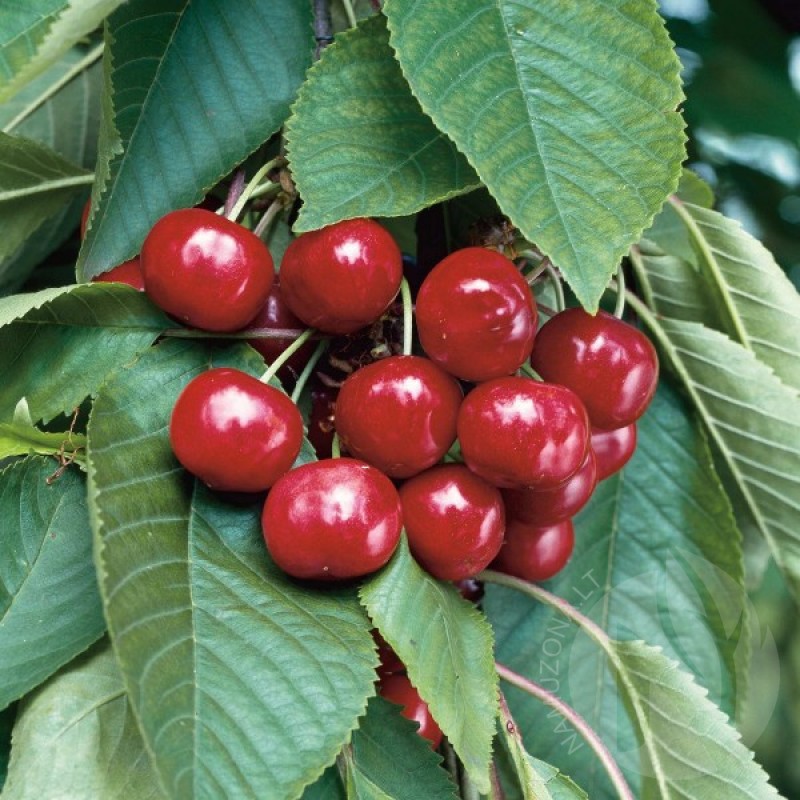
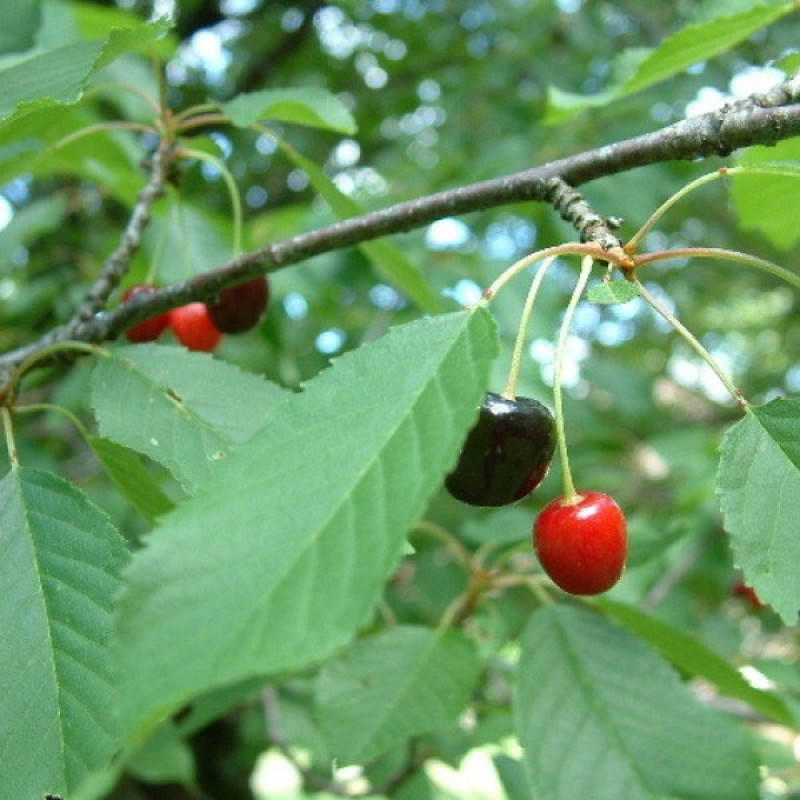
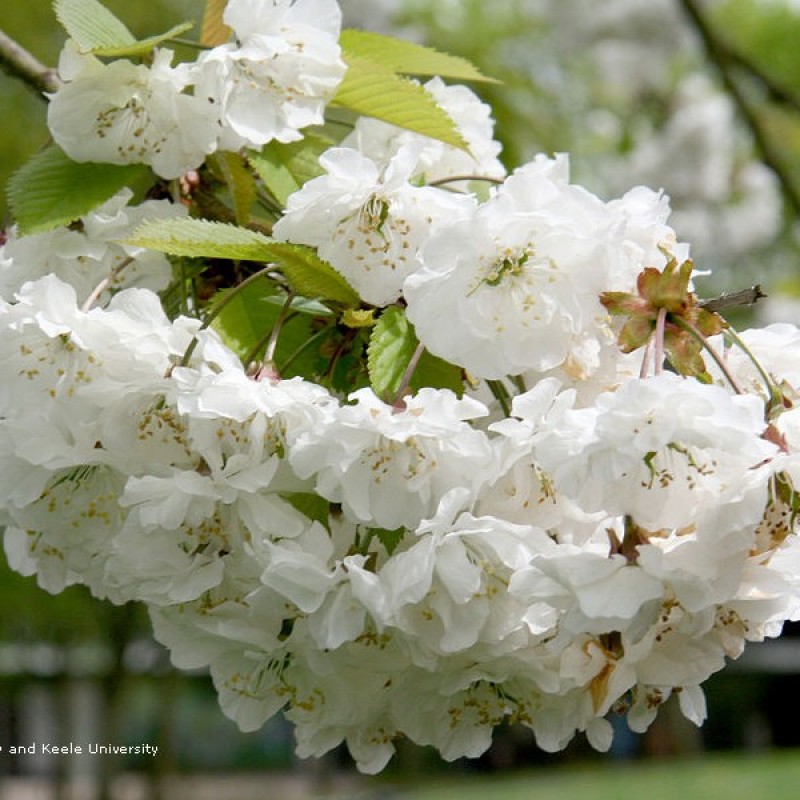
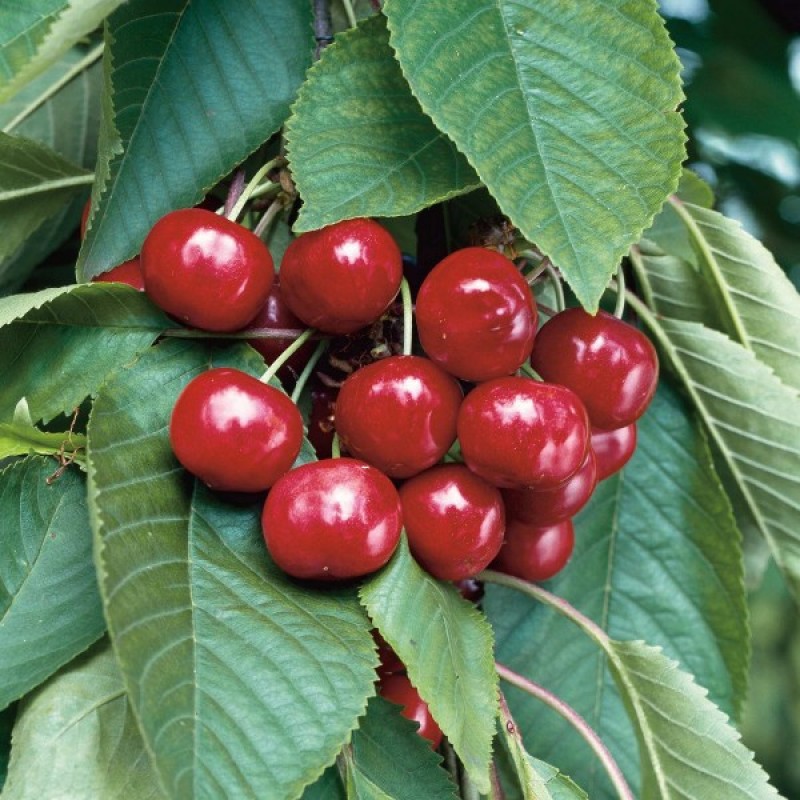
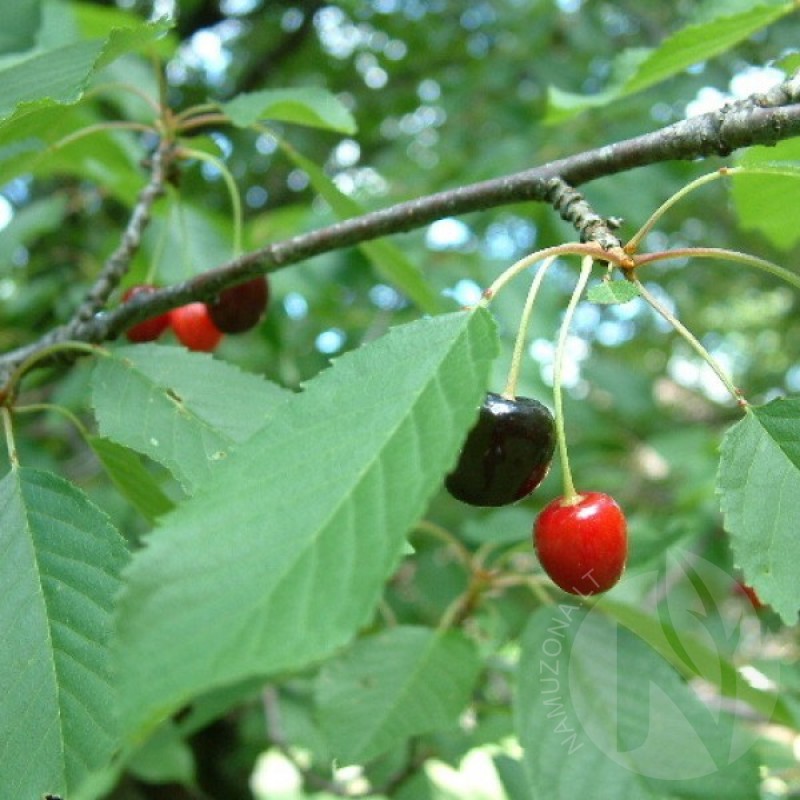
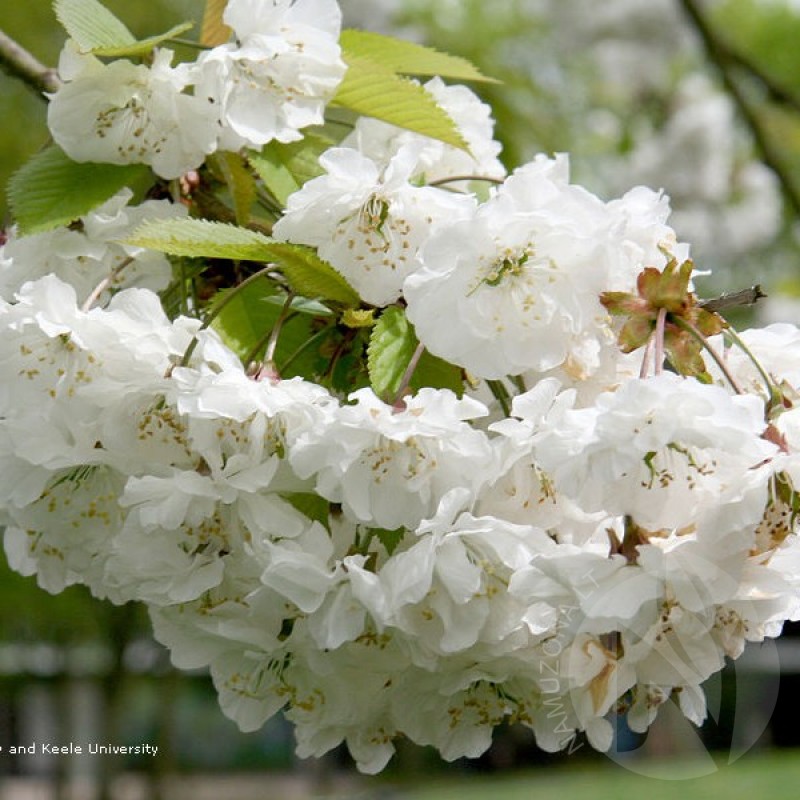
PAY ATTENTION!
All seeds (except SOLD OUT) are available for immediate shipping and will be dispatched within 1-2 business days.
INFORMATION NEEDED? PLEASE CONTACT US NOW!
This sweet cherry is among the most universally enjoyed of all tree fruits. It is believed to have originated from a region between the Black and Caspian Seas in Asia Minor. The Greeks and Romans popularized the fruits through heavy cultivation and planted the trees throughout their ancient empires. Continued European cultivation inspired more refined selection and eventually breeding. American colonists introduced sweet cherries to the New World early on and the trees were brought westward to the California mission orchards where many popular American varieties originated.
Sweet cherry trees are large and deciduous. Their thick canopies become covered with deep green shiny serrated leaves during the growing season. In spring, they burst into heavy bloom, bearing clusters of sweetly scented white flowers that are five-petaled, cupped and ornamental in their own right. Most varieties require a pollinating tree nearby to ensure a good fruit crop. The fruits are borne in clusters or singly and are shiny, round and red. They usually ripen by midsummer.
Plant sweet cherries in climates where summers are drier. This will ensure that the fruits will have maximum sweetness and won’t crack during development. They require full sun and well-drained soil that’s moderately fertile. Like many fruit trees, cherries fruit best when pruning regularly. Prune while the trees are dormant to shape them and remove unwanted suckers. Cherries can only survive in regions with cold winters and require 1000 to 1500 annual chilling hours for good flowering and fruit production.
Genus - Prunus
Species - Avium
Common name - Sweet Cherry
Pre-Treatment - Required
Hardiness zones - 3 - 7
Height - 30'-35' / 9 - 10 m
Spread - 25'-35' / 8 - 10 m
Plant type - Medium fruit tree
Vegetation type - Deciduous
Exposure - Full Sun, Partial Sun
Growth rate - Medium
Soil PH - Acidic, Neutral
Soil type - Clay, Loam, Sand, Well Drained
Water requirements - Average Water
Landscape uses - Edible, Fruit / Fruit Tree, Shade Trees, Topiary / Bonsai / Espalier
Bloom season - Spring
Leaf / Flower color - Green / White
GERMINATION INSTRUCTIONS
1. Soak the seeds in a bowl of cool water overnight. Lay the seeds on a flat surface to dry for several hours.
2. Stratify seeds in a plastic bag full of moist sand inside the refrigerator for 90-120 days. Keep the sand barely moist during the cold stratification period.
3. Sow the seeds the following spring once outdoor temperatures rise above +18C (65F) during the day and +8C (48F) at night. Or sow indoors in the propagator or pots
4. Prepare a pot for each seed. Fill with clean soil. Sow one seed in each pot at a depth of 2-3 cm (1").
5. Water the seeds to a depth of ~8-10 cm (~3") after planting them. Maintain moisture at this depth during the germination process.
6. Place the pots outdoors in a sheltered spot where they will be exposed to direct sun in the morning and afternoon. Protect the seeds from direct sunlight during the hottest part of the day since the soil will warm too quickly and dry out.
7. Watch for sprouting one month after sowing. Maintain the same light and moisture conditions provided to the seeds during germination until they grow to 10 cm (4") in height. (info source: eHow.com)
Atsiliepimų apie šią prekę kol kas nėra.
No questions about this product.










